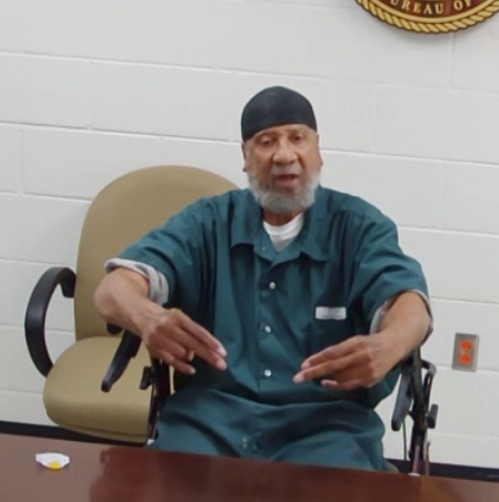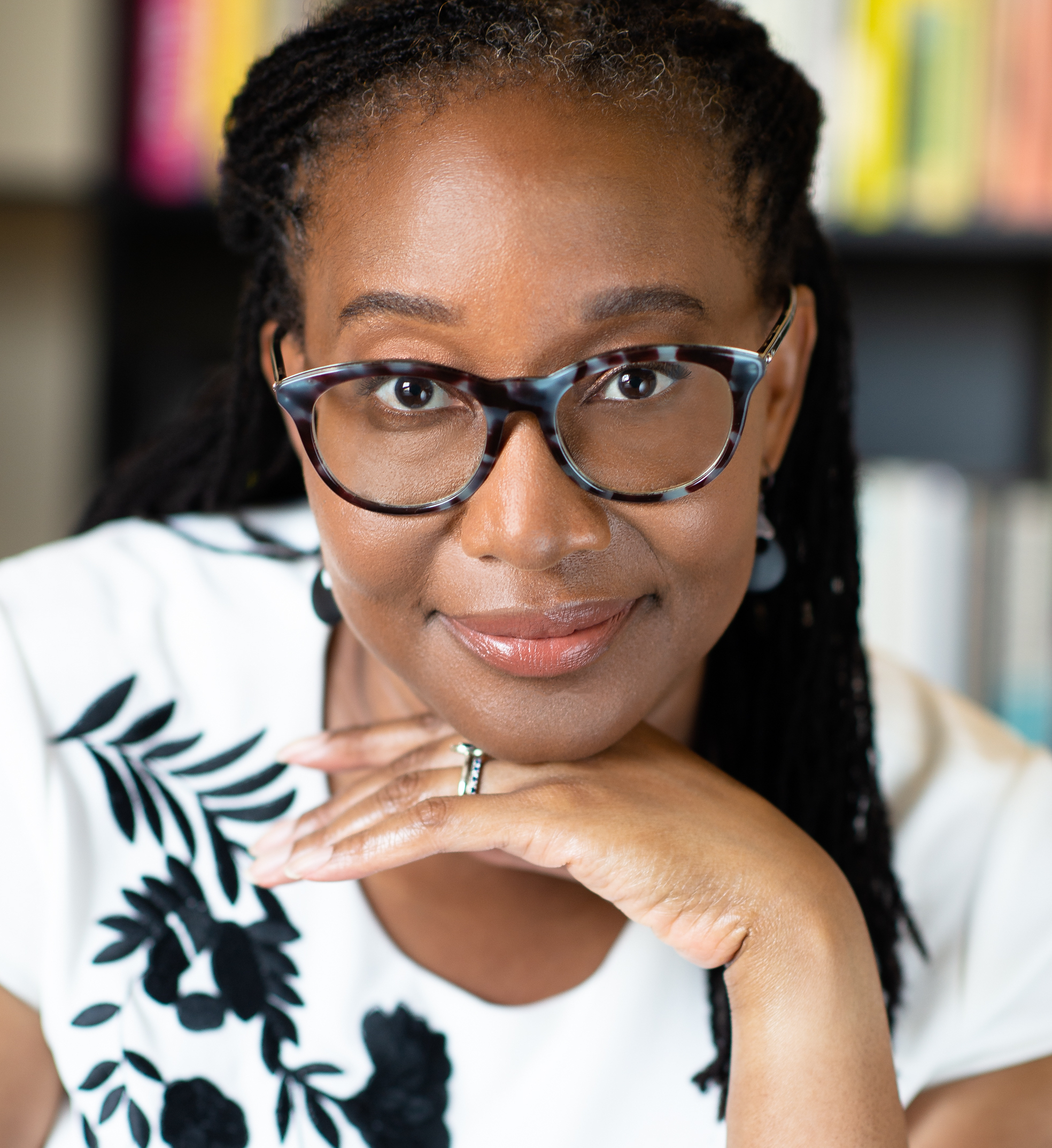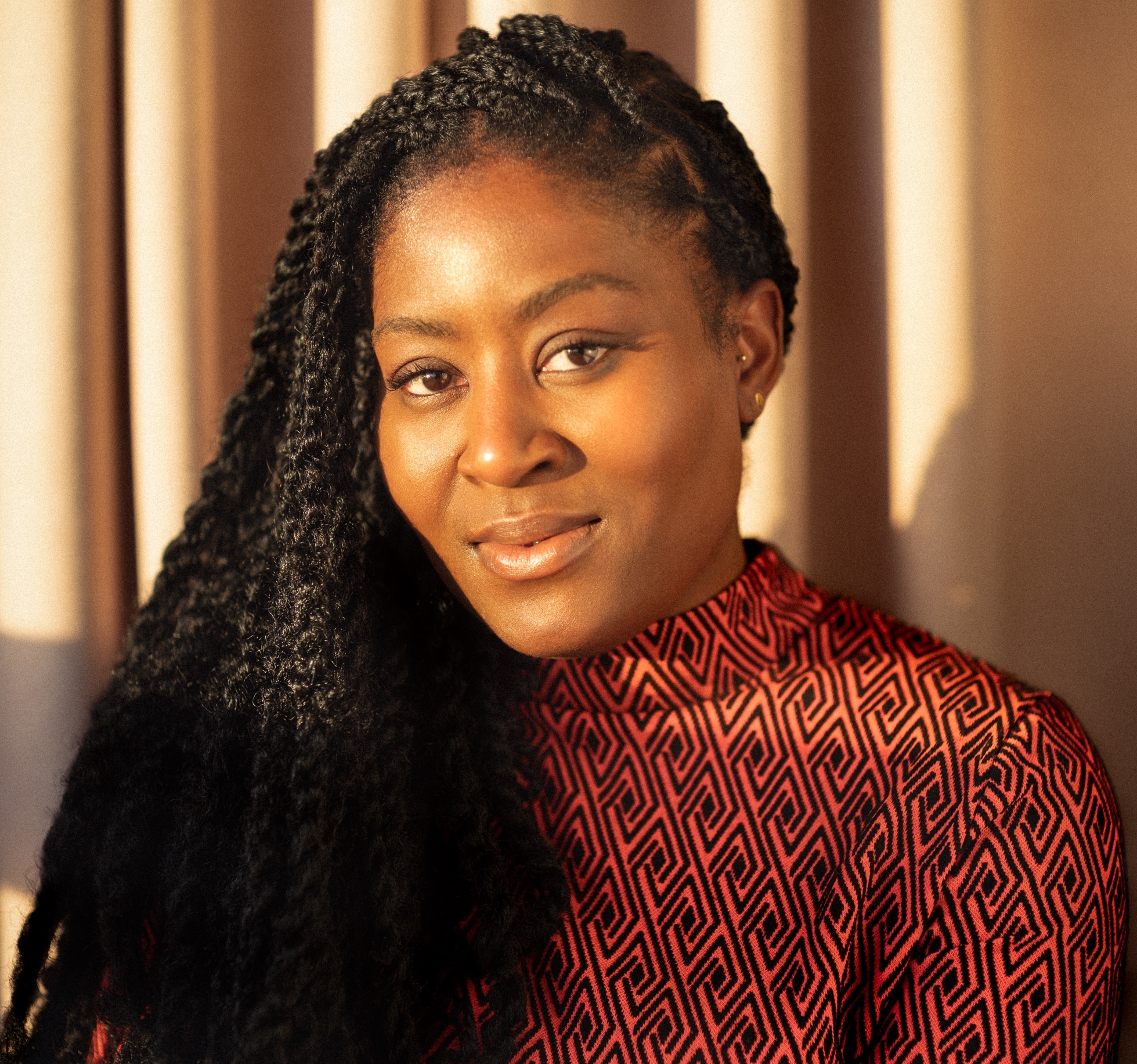'The new Malcolm X': Who was Jamil Al-Amin - the forgotten radical of the Civil Rights Movement?
The Lead's Reading Room: An exclusive extract from Arun Kundnani's new book What Is Antiracism?
The Reading Room
Welcome to our Reading Room. Dive into a deeper conversation and find leads for your reading list with our collection of extracts from upcoming books - by writers you know, and writers you should get to know.
What Is Antiracism?
Arun Kundnani
The National Conference for New Politics, held in Chicago in 1967, was an ambitious attempt to unite the white Left and the Black freedom movement. Today, it is remembered as the birth of what would later be called “identity politics.” But the radicalism of the most important Black leader at the conference, Jamil Al-Amin, tells a different story – one that remains pertinent to our struggles today.
On August 31, 1967, several thousand delegates gathered at the Palmer House Hotel in Chicago for the opening rally of the National Conference for New Politics (NCNP) convention. The weekend-long event was an ambitious attempt to forge a broad coalition of over 200 different organizations, including Martin Luther King’s Southern Christian Leadership Conference (SCLC), Students for a Democratic Society, the Socialist Workers Party, and the National Committee for a Sane Nuclear Policy. On the opening night, King outlined an anticapitalist politics that was essential to his worldview but has today been erased from public memory. He told the audience: “Capitalism was built on the exploitation and suffering of Black slaves and continues to thrive on the exploitation of the poor – both Black and white, both here and abroad.” The only solution: “a radical redistribution of political and economic power.” There was talk at the convention of running King as an independent candidate of the Left in the following year’s presidential elections.
Despite the prominent role of King and his SCLC, the leading Black organization at the NCNP convention was the Student Nonviolent Coordinating Committee (SNCC), chaired by Jamil Al-Amin, then known as H. Rap Brown. Born in Baton Rouge, Louisiana, Al-Amin worked with the civil rights movement in Alabama and Mississippi in the mid-1960s. He was only twenty-three years old when he was elected SNCC’s national chair, four months before the NCNP convention. As he traveled the US that summer, federal agents and informants constantly tailed him. In the month and a half before arriving in Chicago, he had been shot in the face with buckshot by a deputy sheriff and arrested twice, on incitement to arson and riot in Maryland (a state attorney later admitted to fabricating the charges) and on firearms charges in Louisiana (these were voided on appeal when it emerged that the judge had announced at the state’s Bar Association convention before the trial that “I’m going to get that nigger”).
A few days before the NCNP convention, FBI director J. Edgar Hoover sent a memo to all the bureau’s field offices, instructing them to establish a new, secret “counter-intelligence endeavor,” known as Cointelpro, to “expose, disrupt, misdirect, discredit, or otherwise neutralize the activities of black nationalist, hate-type organizations and groupings.” Among the groups targeted were King’s SCLC. Al-Amin was one of the four “extremists” mentioned by name in the memo. Over the following three months, the FBI sent the White House an average of two memos a week describing Al-Amin’s activities.
Al-Amin rejected the liberal narrative that the US was on the verge of overcoming past legacies of racism. The racial advances that liberals celebrated in the 1960s were superficial, he argued; in fact, there was regress, not progress
With his down-to-earth way of speaking about Black liberation, Al-Amin was a new Malcolm X in the eyes of many. He was an agitator and an instigator; in his speeches, he rhymed, joked, and provoked. After the Detroit uprising in the summer of 1967, he said: “They used to call it Motown; now it ain’t no town. They used to call it Detroit; now they call it destroyed.” But behind the “rap,” there was also a substantial political analysis. At his speech to the NCNP convention’s Black Caucus, Al-Amin drew a grim picture of the situation facing Black America. “America is … putting into effect the genocide of Black people,” he announced. That was happening in four ways: Black people made up one in three of the US deaths in the war in Vietnam, though they represented only one in ten of the US population; huge numbers of Black children in the Deep South were dying each year of poverty; Black people were being sent to prisons in the name of law and order; and they were being targeted for birth control. Al-Amin rejected the liberal narrative that the US was on the verge of overcoming past legacies of racism. The racial advances that liberals celebrated in the 1960s were superficial, he argued; in fact, there was regress, not progress. The only way to stop this impending violence was by force. “If you choose to play Nazis, we ain’t gonna play Jews,” Al-Amin said.
Violence against Black people, perpetuated by both political parties and enabled by the repressive powers granted to national security agencies, was, he argued, escalating because of economic changes: “We were brought here as slaves to work. There is no more work. We are a problem to America.” Now the US has “a surplus of niggers . . . We have outlived our usefulness.” As he told a French journalist in an interview a few weeks later, “the capitalistic system, as it is set up, cannot accommodate forty or fifty million Black people . . . We believe that that structure can’t be reformed.” Thus, for Al-Amin, racism in the US was a system of carceral, economic, police, and military violence tied, at this historical moment, to a coming contraction of capitalism’s need for Black waged labor. To be deemed surplus to capitalism was, he suggested, to be vulnerable to mass incarceration or elimination.

A photo of Al-Amin taken by Arun Kundnani during an interview
“We have to begin to talk about revolution,” Al-Amin told the NCNP’s Black Caucus in Chicago. That meant connecting to “other oppressed groups across the world,” in Puerto Rico, Vietnam, Africa, and Latin America. “We are a colony inside of America. Black people constitute a colony. An internal colony.” Al-Amin’s predecessor as SNCC’s chair, Kwame Ture (then known as Stokely Carmichael), wrote that the slogan of “Black Power,” which SNCC had adopted the previous year, meant “that black people see themselves as part of a new force, sometimes called the ‘Third World.’”
In fact, Martin Luther King had said more or less the same thing; he repeatedly described the Black ghettoes of US cities as shaped by “internal colonialism” or “domestic colonialism.” Against the liberal suggestion that segregation was based on attitudes of hatred, fueled by doctrines of superiority, he argued the origin of structural racism lay in the economics of inequality, not the psychology of animosity. In the Black neighborhoods of Chicago, King wrote, “every condition exists because someone profits from its existence.” Providing Black people inferior schooling, for example, “continued the availability of cheap labor as the basis of economic expansion. This is but a sophistication of slavery.” The liberal progressive vision of a redemption that flows inexorably from America’s founding values here runs up against a King who is attuned to the ways that oppression reconfigured itself through the centuries, from the plantation to the ghetto.
Where did this leave the white Left who had gathered for the NCNP convention? Al-Amin argued that leadership “should always remain in the hands of the dispossessed.” There are “other dispossessed people in America besides Blacks who we need as allies: the Indian, the Mexican American.” But it was no use forming coalitions with white organizations that were unrepresentative of the dispossessed in the US and, as such, were committed to reform rather than radical change. Instead, the role of white Left organizations should be to support the Black and Third World revolution by “civilizing” their own white communities. The Black Caucus at Chicago took up this argument by calling upon the white delegates to pass thirteen resolutions reflecting SNCC’s message and to allocate 50 percent of the voting power at the NCNP convention to the Black Caucus. After a series of lengthy debates, the majority of white delegates voted to do this. A small group walked out in protest at being asked to condemn Israel’s “imperialist Zionist war” – SNCC leaders had begun working with representatives of the Palestinian cause that summer, the first major Black organization to do so.
“To be Black is not to be revolutionary. When you begin to stress culture without politics, people can become so hooked up in the beauty of themselves that they have no desire to fight. It becomes ego-gratifying just to be Black.”
The NCNP convention was a pivotal moment in the history of the nineteen-sixties Left. There was a recognition for the first time that the Black movement was the vanguard of whatever radical political possibilities existed in the US. The white delegates agreed to the demand that they organize in their own communities. But, for many others, the NCNP convention came to signify the moment when the civil rights movement tragically fragmented and was overtaken by Black Power, white guilt, and a new mood of separatism. On this view, the civil rights movement’s universal values of equal citizenship, symbolized by Martin Luther King, disastrously gave way to more narrowly conceived ethnic identities and political claims, symbolized by Black Power leaders like Al-Amin. Or, in another version, the NCNP signified the moment the Left abandoned the solid economic ground of class politics and descended to the cultural marshes of race, gender, and sexuality, prompting a backlash against the Left from working-class whites, who turned to Nixon, Reagan, and eventually Trump. Some, such as the historian Matthew Frye Jacobson, describe the NCNP convention as the moment when “identity politics was born.”
But this is to distort Al-Amin’s idea of identity. He wrote that it was necessary for Black people to “begin to define your Black heritage” in order to overcome the self-hatred inculcated by white superiority. But the definition of identity was the first stage in a process that had to go beyond cultural heritage to radical politics. “We must move from Black awareness to revolutionary motion.” The recognition or celebration of Black cultural identity was not necessarily antiracist. “To be Black is not to be revolutionary. When you begin to stress culture without politics, people can become so hooked up in the beauty of themselves that they have no desire to fight. It becomes ego-gratifying just to be Black.” These were not the words of someone calling for people to abandon a universal struggle and instead embrace their own ethnic identity. The arguments of Black leaders like Al-Amin only looked separatist within a field of vision parochially narrowed to the US alone. Their argument was not that Black people in the US should go it alone, but that they should build solidarity with the majority of humanity – the people of the Third World, with whom they shared a common struggle against colonialism. This was not a divisive separatism but an internationalist, and therefore universalist, politics.
In identifying colonialism and racism as aspects of capitalism, Al-Amin was also an advocate of a form of socialism. Racism “can’t be destroyed under the capitalist system,” he wrote. The “system is the thing which demands exploitation of people. You have to destroy the system.” There are “a thousand families” who make up the “ruling class of America,” he said. “Our objective is to destroy that ruling class.” For the “total wealth of any country and the world . . . belongs equally to all people.” The “political principles of socialism certainly have validity,” he wrote but, following Frantz Fanon, he argued that “we must extend the Marxist analysis when we view colonialism.” Al-Amin’s anticapitalism led him to oppose the incorporation of Black leaders into the system if doing so left underlying economic structures intact. “The only constructive thing a Black mayor can do is to organize Blacks to destroy the system that oppresses Black people.”
Al-Amin's dire warnings about the fate of the Black surplus populations turned out to be essentially accurate: from the 1970s, the US removed millions of Black people from their communities and incarcerated them.
The struggle of workers against capitalists has often been assumed to be unrelated to the cause of Black liberation, if not actively opposed to it. But both Martin Luther King and Al-Amin were anti-capitalist antiracists. Both saw in the anticolonial struggles fought in Africa a model of analysis and action that could be applied to the Black freedom movement in the US, and this struggle against “internal colonialism” was for them a struggle against the capitalist class that ruled the US. Only by wrongly assuming that class struggle and antiracism are unconnected political causes can the civil rights movement be reduced to a simple demand for equal opportunities in capitalist markets, or Black Power misrepresented as a movement to diversify the ruling class through the creation of a Black wing of the establishment.
The last public statement signed by Martin Luther King before his assassination in 1968 was a call for an end to the government’s persecution of Al-Amin and his release from New Orleans Parish Prison. In the following years, Al-Amin continued to organize for revolutionary transformation, even as a federal judge imposed an order on him not to travel outside of Manhattan and the South Bronx. In 1971, imprisoned at the Queens House of Detention in New York City, he converted to Islam and changed his name from H. Rap Brown to Jamil Abdullah Al-Amin. Upon his release in 1976, he settled in Atlanta and, over the subsequent years, became one of the major leaders of the US Muslim community. His dire warnings about the fate of the Black surplus populations turned out to be essentially accurate: from the 1970s, the US removed millions of Black people from their communities and incarcerated them.
In the 1990s, by which time the national security agencies had designated Islam the new enemy, Al-Amin was targeted again, with the FBI sending informants into the mosque where he was the imam. In 2002, he was convicted on charges of murdering a law enforcement officer, despite fundamental weaknesses in the prosecution’s case. Another officer, who survived the shoot-out, said he was completely sure that the perpetrator had grey eyes and was wounded. Neither of those were true of Al-Amin, but an earlier arrest warrant wrongly described Al-Amin as having grey eyes – suggesting the officer had matched his description to what he had been told Al-Amin looked like rather than to what he could actually recall seeing. Aside from the weak identification evidence, prosecutors relied on forensics. But the forensics officer on the case was later fired for inaccurate work. And the trial did not hear from Otis Jackson, who had confessed to being the shooter in a signed affidavit. Like thousands of other Muslims in the US who were prosecuted in the years after 9/11 as part of the domestic War on Terror, there was little chance of Al-Amin receiving a fair trial, with Muslim defense witnesses treated suspiciously during the trial and the judge not allowing defense attorneys to refer to the long history of the FBI’s targeting of Al-Amin.
After spending years in solitary confinement at the supermax prison in Florence, Colorado, Al-Amin is today imprisoned at a federal penitentiary in Tucson, Arizona. One of the great figures of radical antiracism in the US has been almost entirely forgotten.
This article is an edited extract from Arun Kundnani’s new book What is Antiracism? And Why it Means Anticapitalism, published by Verso.
The Lead is now on Substack.
Become a Member, and get our most groundbreaking content first. Become a Founder, and join the newsroom’s internal conversation - meet the writers, the editors and more.




